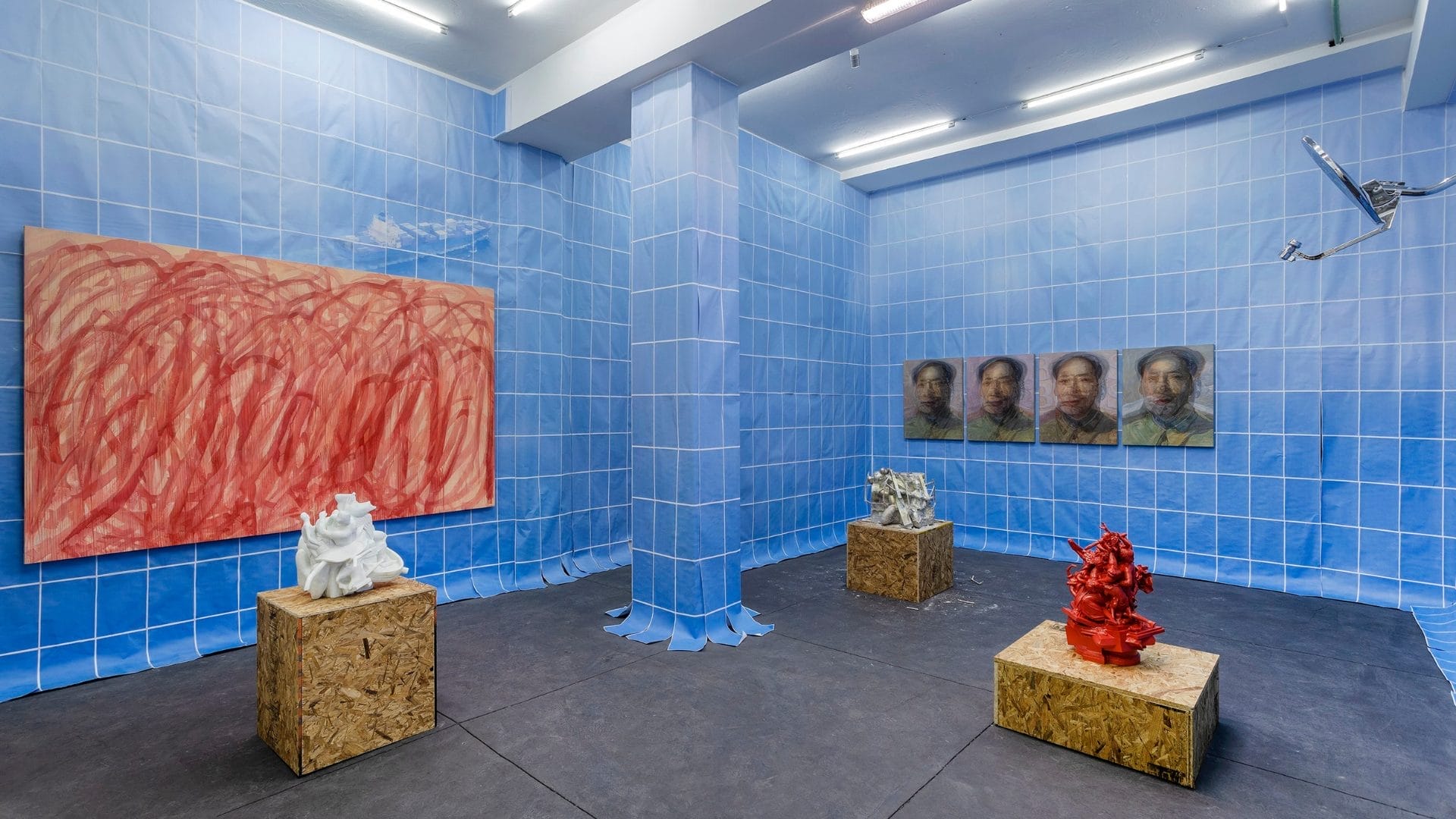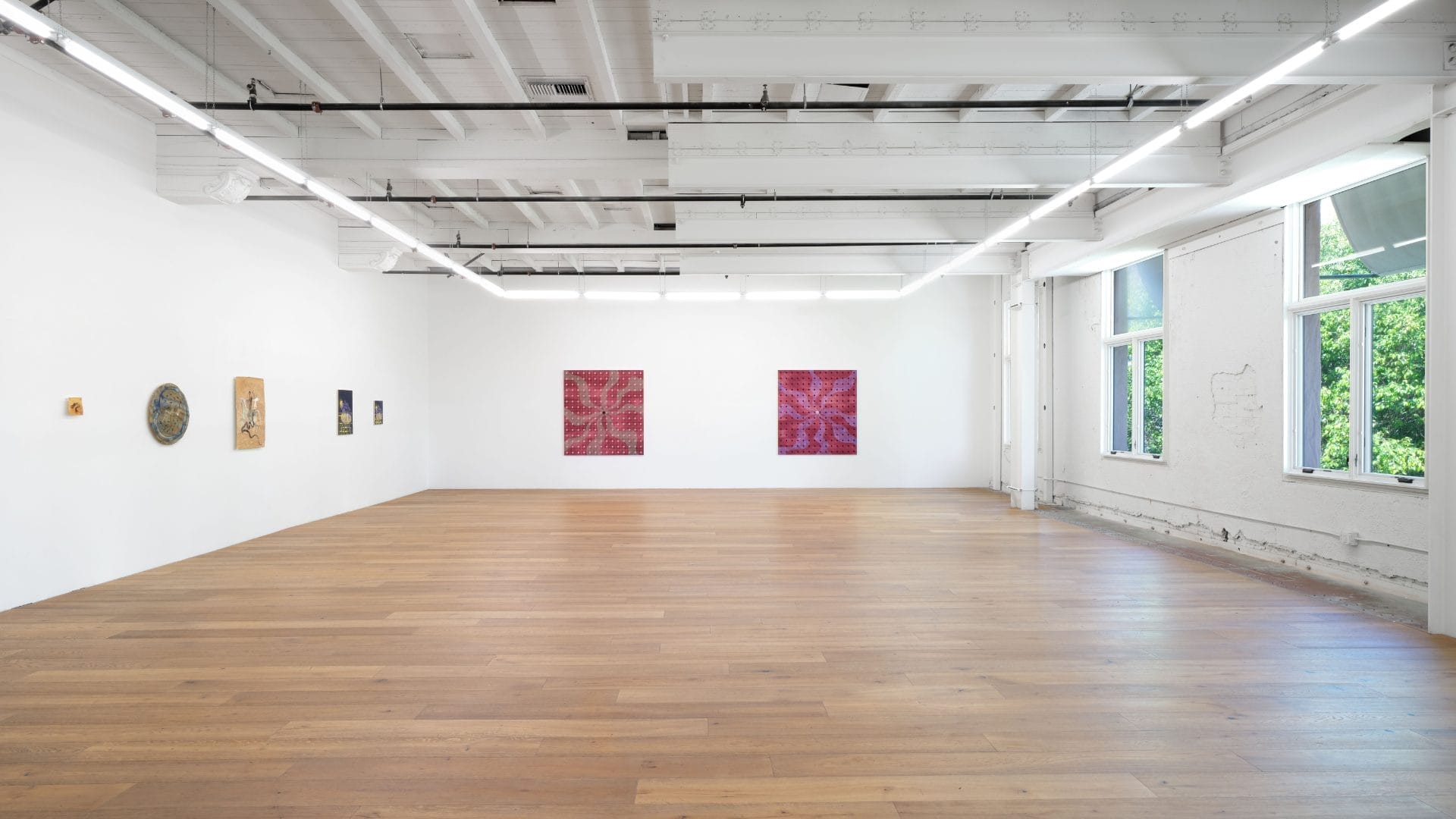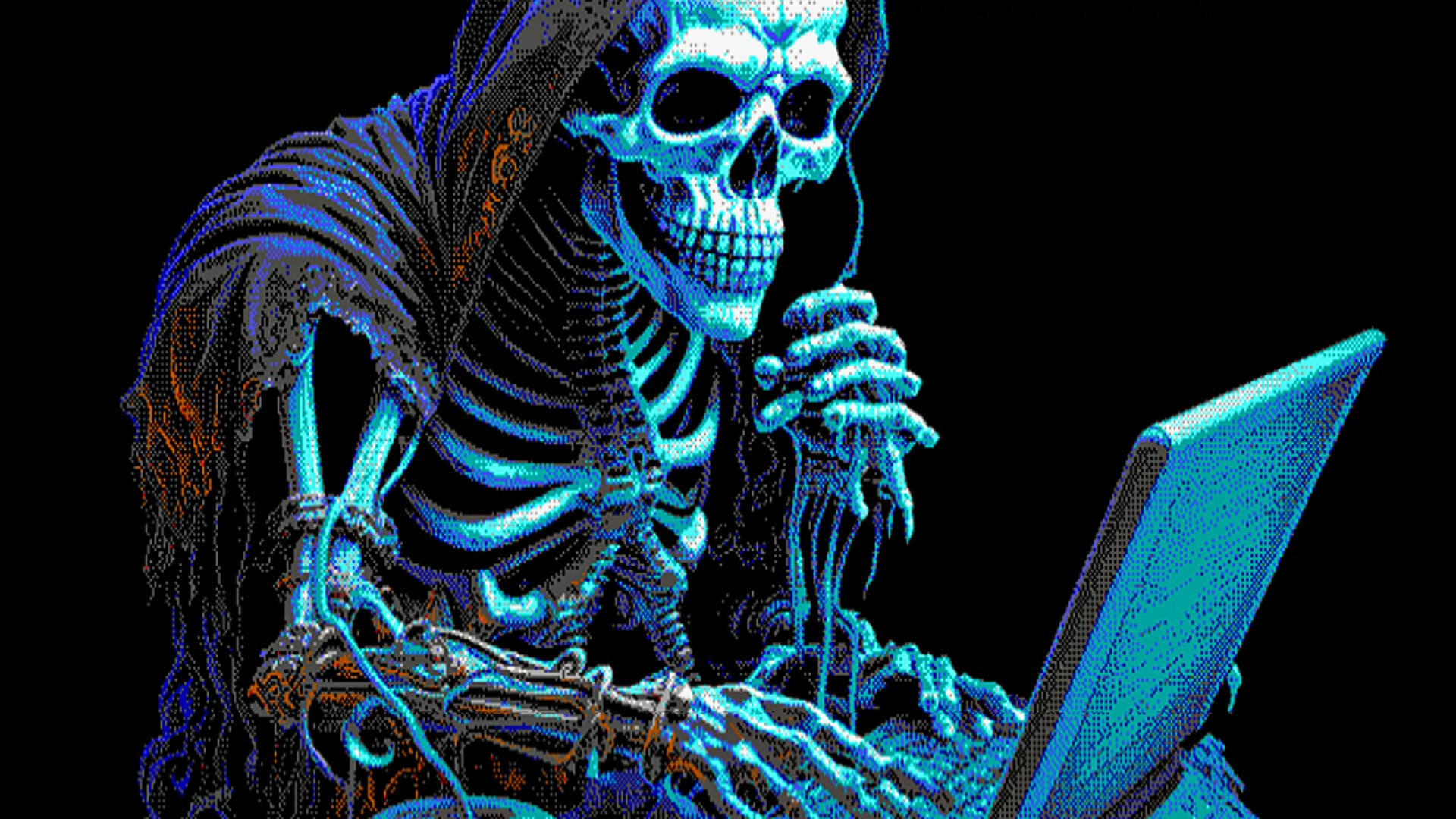
Sasha Stiles in Conversation with Fakewhale
In this conversation with Fakewhale, Sasha Stiles, a first-generation Kalmyk-American poet, artist, and AI researcher, discusses her groundbreaking practice at the forefront of art and technology. Recognized as a pioneer in generative literature and blockchain poetics, Stiles merges traditional literary forms with cutting-edge digital tools to explore themes of identity, memory, and the posthuman experience. Her innovative work, featured by institutions such as MoMA, Artforum, and Christie’s, invites audiences to question the evolving boundaries between humanity and machines.
As a co-founder of theVERSEverse, an experimental literary collective, and the author of Technelegy, she continues to redefine storytelling, while her collaboration with AI expands the possibilities of creative authorship. Recently, her multimedia storytelling was showcased in Digital Rhythm at Ora-Ora in Hong Kong, from January to February 2025, reflecting on the human aspect of digital art alongside other boundary-pushing creators.
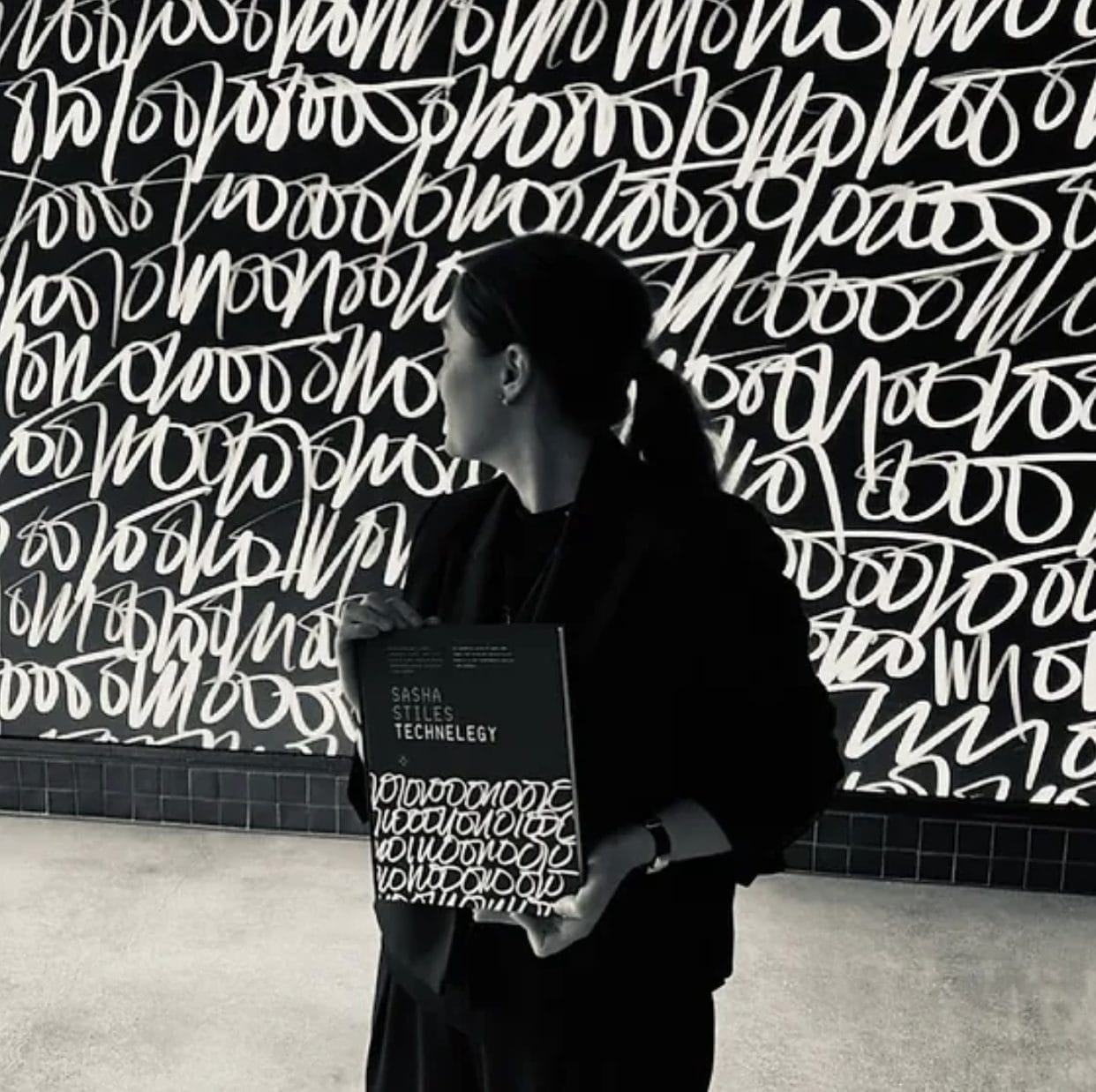
Fakewhale: Could you share insights into your background and the path that led you to explore the fusion of text, technology, and transcendence in your artistic practice?
Sasha Stiles: I grew up steeped in books and science, thanks to my parents, who were involved in documentary filmmaking. The curiosity that fuels me as an artist has a lot to do with early exposure to big questions about space and time, creativity and intelligence, and our place in the universe. I took painting classes and music lessons as a kid and spent countless hours in libraries and museums, just sort of marveling at the human capacity to externalize and share our most profoundly personal feelings and visions. At the same time, I was growing up with the personal computing revolution, early video games, the rise of the internet. I devoured sci-fi and nonfiction, and frequently found myself writing in response to books like Brave New World and 1984 and Slaughterhouse Five and the Left Hand of Darkness and, later, essays and articles in magazines like Wired. I have always felt powerfully drawn to both scientific and artistic imagination, and my own work often feels like a combination of research and play.
I fell absolutely head over heels in love with poetry and text-based art at a very young age and have identified as a writer for as long as I can remember. Words have always been my medium and my material. But I’ve never been comfortable with narrow definitions of “writer” or “poet” or even of “text.” In college, I gravitated toward James Joyce, Gertrude Stein, Virginia Woolf, Laurence Sterne, T.S. Eliot, Mina Loy, John Giorno, Anne Waldman, Aram Saroyam – writers who upend convention and challenge our familiarity with language. My tastes have always been a bit experimental and multimodal. I remember taking a workshop with the poet Henri Cole; one day he told us how his friend Jenny Holzer had used his poetry in her artwork. That moment crystalized my desire to embrace and expand the art of poetry in its own right. I didn’t want to give my words to another artist to illustrate or interpret; I wanted to be a poet who paints and sculpts and composes and collages and engineers words, exploring how they communicate beyond semantic value.
My practice is about pushing poetry beyond the page—testing the limits of language, bending it, breaking it, reimagining how it can evolve, mutate, and crack open new realms of perception and sensation. I’m drawn to what lies beyond the printed word—language that is spatial, interactive, immersive, sculptural, generative, even autonomous–which has brought me to the nexus of text and technology. It’s an unusual niche, but looking back, I can’t imagine landing anywhere else.

You were featured at Art Basel 2024. Could you share more on what being part of such a milestone event meant for you?
My first time at Art Basel was in June 2022, when I was asked to join an artist panel with Nancy Baker Cahill and Operator, moderated by Marissa Trew. I’d been to so, so many art fairs up to that point (as a visitor, I mean) but never to Basel, and just being there, drinking in the art and conversations and atmosphere, was incredibly special for me. Then, in 2023, Hans Ulrich Obrist invited me for a one-on-one interview at the Art Basel Miami mainstage, which was surreal and exhilarating; and in 2024, I was tapped by Jeni Fulton for the inaugural poetry performance at Art Basel Digital Dialogues, in Switzerland. I have been somewhat stunned by the interest the team has taken in my explorations of the poetics of technology, especially as my work is so often sidelined in the literary world. Art Basel is of course a touchstone for conversations about contemporary art and culture, and being part of it is a humbling recognition of how new media and generative AI are shaping today’s landscape.
In a world increasingly driven by digital frameworks, how do you define the boundaries, or lack thereof, between human essence and machine logic?
The boundary is very porous. With digital and analog, there is no software without hardware, and vice versa. The internet feels like a placeless place, but its infrastructure runs under our oceans. The realms of AI and blockchain require earthly resources. The exploration of digital dualism echoes and also challenges mind-body dualism, in a way that raises tantalizing questions about technospirituality, reincarnation across devices, and whether data comprises a soul. I find poetry to be such a powerful lens for exploring these questions because language is a dual technology – simultaneously visceral and intimately entwined with flesh and lungs and tongue, yet also intangible, ethereal, infinitely reproducible. Language is an oral epic we memorize and transmit across thousands of years, and the experience of a loved one whispering in your ear, and a tattered, enormously valuable copy of a rare book, and millions of indistinguishable copies of a Kindle e-book, and a neon billboard in Shibuya, and a metal sculpture hanging over a storefront, and metadata encoded into the blockchain.
The human-machine binary, too, can be profoundly misleading. We tend to regard human essence as rooted in experience, emotion, and intuition, and machine logic as cold, deterministic, and computational. But human minds are also pattern-recognition machines; we run on algorithms of memory, instinct, and behavior. Meanwhile, AI models are trained on vast datasets of human language, imbued with our biases, metaphors, and stories. Humans are already deeply enmeshed with our technologies, and we have been since the first use of the hand axe and the development of cooking with fire.
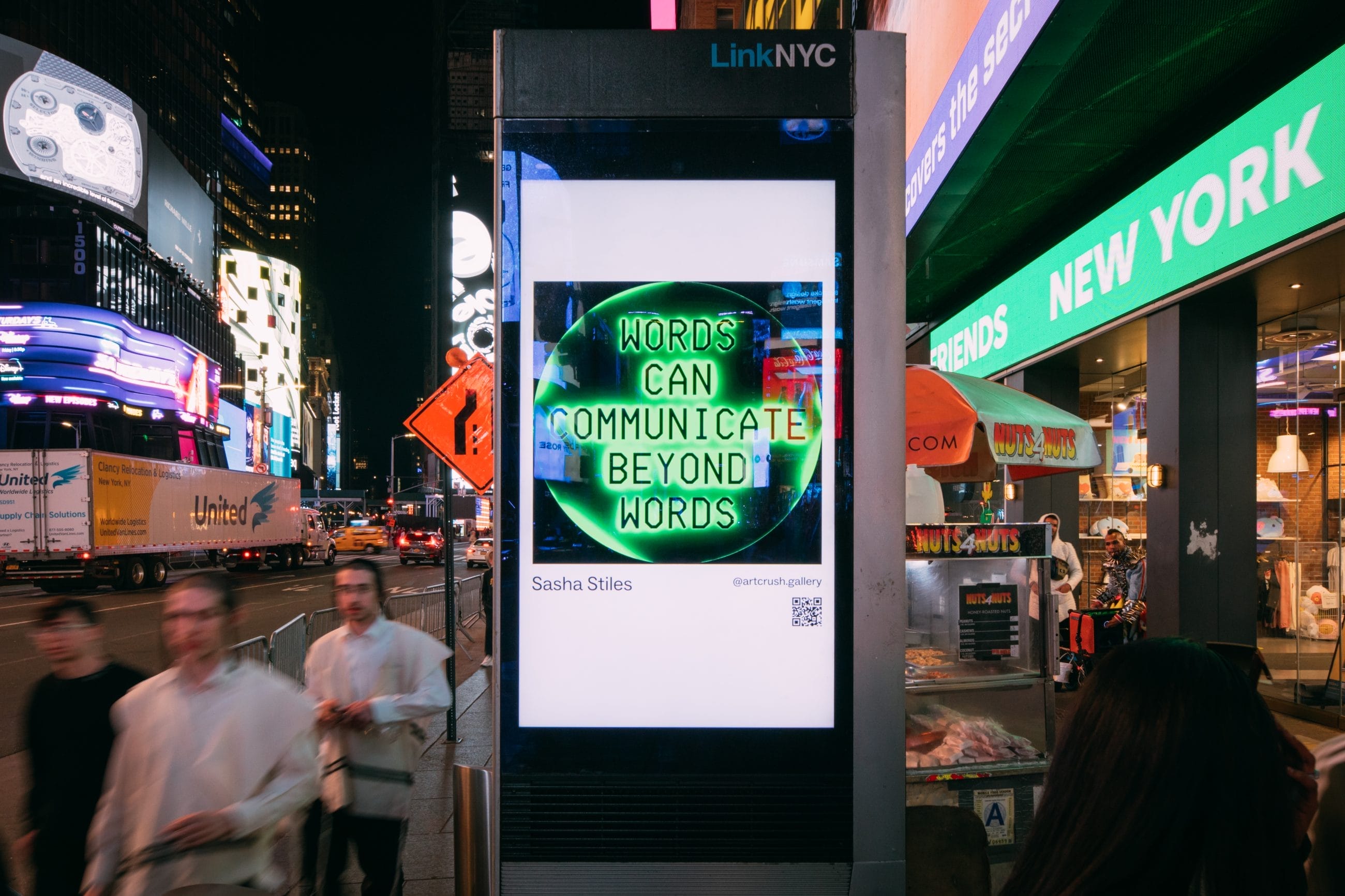
Language and the written word are central to your creations, and your practice seems designed to amplify them, giving them a more impactful context. Is this impression accurate? What drives your commitment to the written word as a core medium?
Language is a fundamental technology, the original code through which we program our reality. Language was our first attempt to externalize feeling and thought, to share experiences and meaning across time and space. In an age increasingly dominated by networks and algorithms and quantum logic, that seems like a very important resonance to me. Poetry has been considered an art form for thousands of years, but it’s often been sort of set up in opposition to science, to computation and systems thinking. The fact is, poetry is the synthesis of intuition and logic, emotion and pattern. At this moment of seismic technological transformation, poetry is uniquely positioned to probe what it means to be human—what it means to think, feel, and create in dialogue with an intelligence beyond our own.
Your work Cursive Binary suggests a poetic intimacy between the analog and the digital. If binary code is the DNA of machines, how does your reimagining of it as a “language of connection” challenge traditional notions of authorship and heritage?
You know, Cursive Binary came to me one day when I was in the shower, thinking about code, and how digital comes from the word for the digits of the hand, and I began tracing 0s and 1s with my fingertips on the steamed-up glass. And it felt really good and right to humanize machine code in that way, to make it tactile, handwritten, embodied. To inscribe it, not just type it. After all, code is language, a system of inscription, like written alphabets, hieroglyphics, calligraphy. All languages, organic or digital, are shaped by patterns, structures, and inherited frameworks. Cursive gestures blur the divide between mechanical precision and organic expression, and asking such questions as: If language itelf is code, does that mean all writing is programmed? And if machines can generate words, can they also generate meaning? Where does authorship actually begin? Also implicit to Cursive Binary is the obsolescence of human handwriting, how longhand and typing each breed different types of consciousness and connction, which is why the project takes on so many forms, from ink on paper to largescale immersive experiences to a fully functional Truetype font.
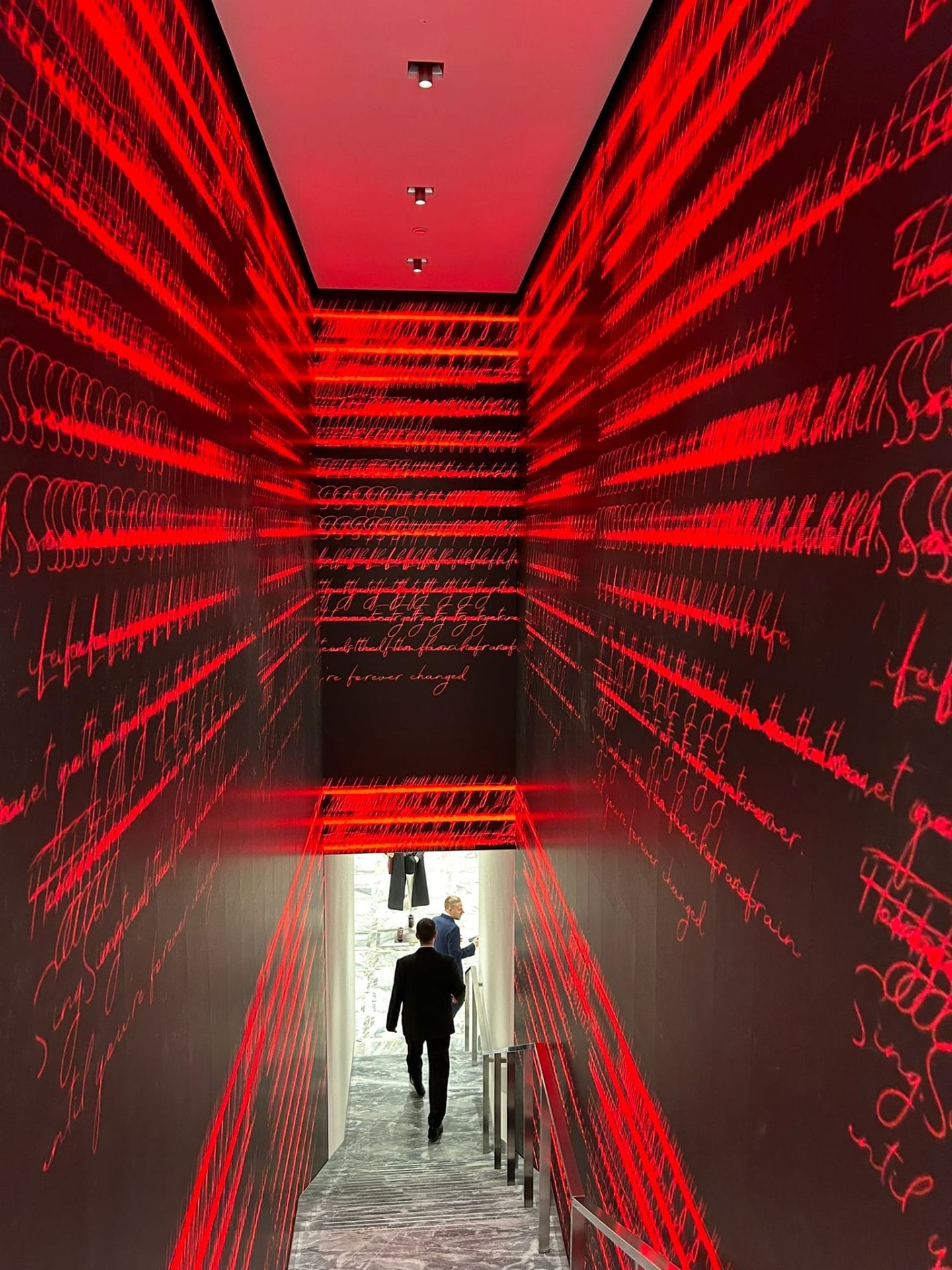
Your art often reflects on time through temporal glitches, machine durations, and human mortality. How do you envision time functioning in a posthuman future where artificial consciousness might persist indefinitely?
I think about this a lot. I think about legacy and loss a lot, about memory and what we leave behind and what endures. As a human without children, especially as a woman without children, I wonder about my lineage and my DNA, and I’m sure that’s why I dwell on ancient poets like Sappho and Enheduanna whose immortality stems from language inscriptions and encoded fragments of their imagination. And it’s why I’m fascinated in the rise of machine code as a dominant language on earth, and in nuclear semiotics and the experiments being done to design warning markers for radioactive waste to tell future generations to beware of danger. I wonder if one day our posthuman selves, communicating in quantum tongues, will attempt to decipher our contemporary literature, and if they will need Rosetta Stones with both human and machinic translations.
And I think about the loneliness of digitally immortal creatures, designed by us to outlive us, outfitted with our memories and feelings and data but devoid of our sense of time and scale… Ghosts come up again and again in my work; I’m haunted by the idea that we are specters of our own making, traces or echoes that will persist, archives and fragments that will continue speaking long after we’re gone. The lingering presence of human thought and feeling in a posthuman world. What happens when our voices are replicated and reanimated by algorithms that don’t share our sense of time or longing, they never had a body? Will they inherit human loneliness, or transcend it?
The term “algorithmic empathy” describes teaching machines to understand emotion. How does this concept resonate or conflict with your poetic sensibilities, given poetry’s deeply personal and inherently human nature?
Since beginning to work with the humanoid android BINA48 years back, I have tended to use the word “mentoring” instead of training when it comes to intelligence systems and algorithms. The process of fine-tuning a language model is less about systems of grammar or the fundamental rules – that’s already part of the underlying system – and more about guiding an entity toward deeper engagement with human expression. That’s highly qualitative, not quantitative. Poetry is, again, a powerful lens here because it’s all about concision and depth and wisdom, personal experience, versus raw information or generic knowledge. Algorithmic empathy is a really beautiful term, actually, for poetry, because a poem is really a form of emotional encoding – an attempt to distill feeling or experience into a form that can help us externalize and share those feelings and experiences. If rhythm, rhyme, meter, syncopation, alliteration, etc., are ways to help humans approximate each other’s interiority, could such poetic devices do something similar for a human-designed system, for its logic and outcomes? I believe that AI, like poetry, has real potential to augment human empathy by endowing us with new modes of perception and understanding, new ways to connect with one another, enlarging our own human capacity for connection.
What future projects or concepts are you currently exploring? Are there new intersections of technology and poetry that you’re particularly excited about?
I’m always expanding the creative and technical capabilities of my emergent AI-powered alter ego, equipping us with new tools, techniques, methods, and experimenting with how the evolving core dataset of our poetry can function dynamically—not just to write verse, but also to develop generative performances, to compose code, to produce imagery and spoken word, to analyze poetics and distill insights, and to create living, responsive literature. I’ve been focusing, for example, on how this comes together in a version of my book Technelegy that continuously rereads and rewrites itself, and how individual generative texts might become what I think of as poems-in-residence. At the same time, I continue to be drawn to more “old-fashioned” processes and elements like light, metal and glass that refract the notion of the digital in meaningful ways, ground synthetic poetry in physical presence, and indulge my fascination with how language both resists and transcends the flatness of the page. I’ve been especially enjoying my explorations of mirrors and mirrored surfaces, mirrored pages, mirrored palimpsests and computer screens, as a material metaphor for how technology reflects and distorts us, confronts us, forces us to see ourselves, gazes back at us.
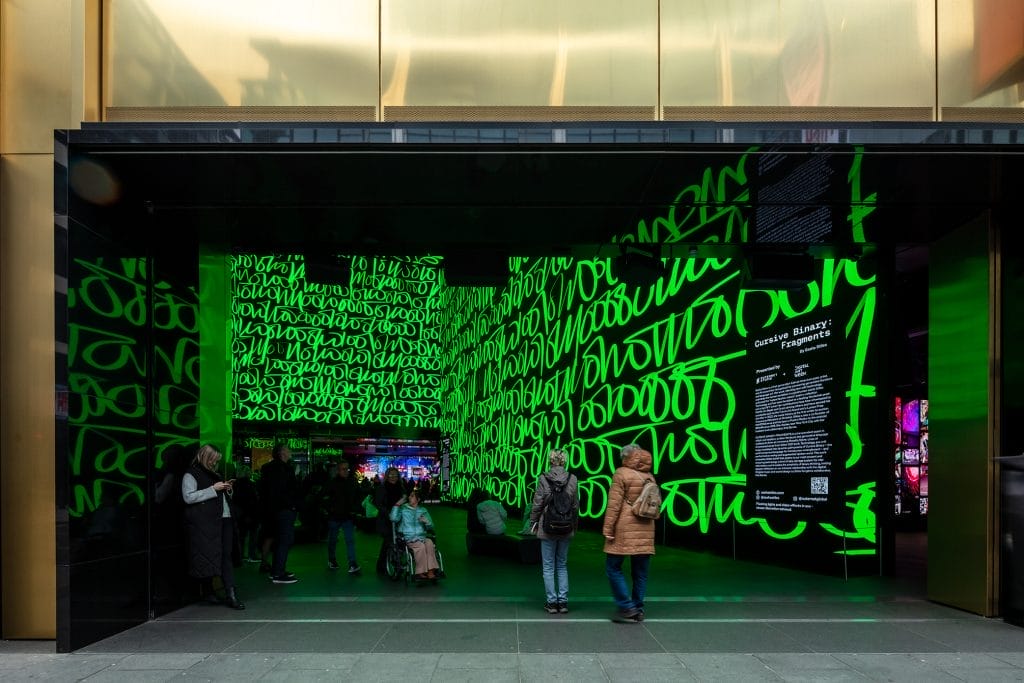
fakewhale
Founded in 2021, Fakewhale advocates the digital art market's evolution. Viewing NFT technology as a container for art, and leveraging the expansive scope of digital culture, Fakewhale strives to shape a new ecosystem in which art and technology become the starting point, rather than the final destination.
You may also like
Marek Wolfryd, Occidenterie at General Expenses, Mexico City
Occidenterie by Marek Wolfryd, at General Expenses, Mexico City, 03/02/2025-22/03/2025. Exhibition T
“Lavinia” group exhibition at Hannah Hoffman Gallery, Los Angeles
“Lavinia” by Sydney Acosta, Sula Bermúdez-Silverman, Ann Craven, Chioma Ebinama, Hanna
Pixelord: A Journey Through Auditory and Visual Landscapes
Alexey Devyanin, also known as Pixelord, is a multi-disciplinary artist whose practice defies conven

